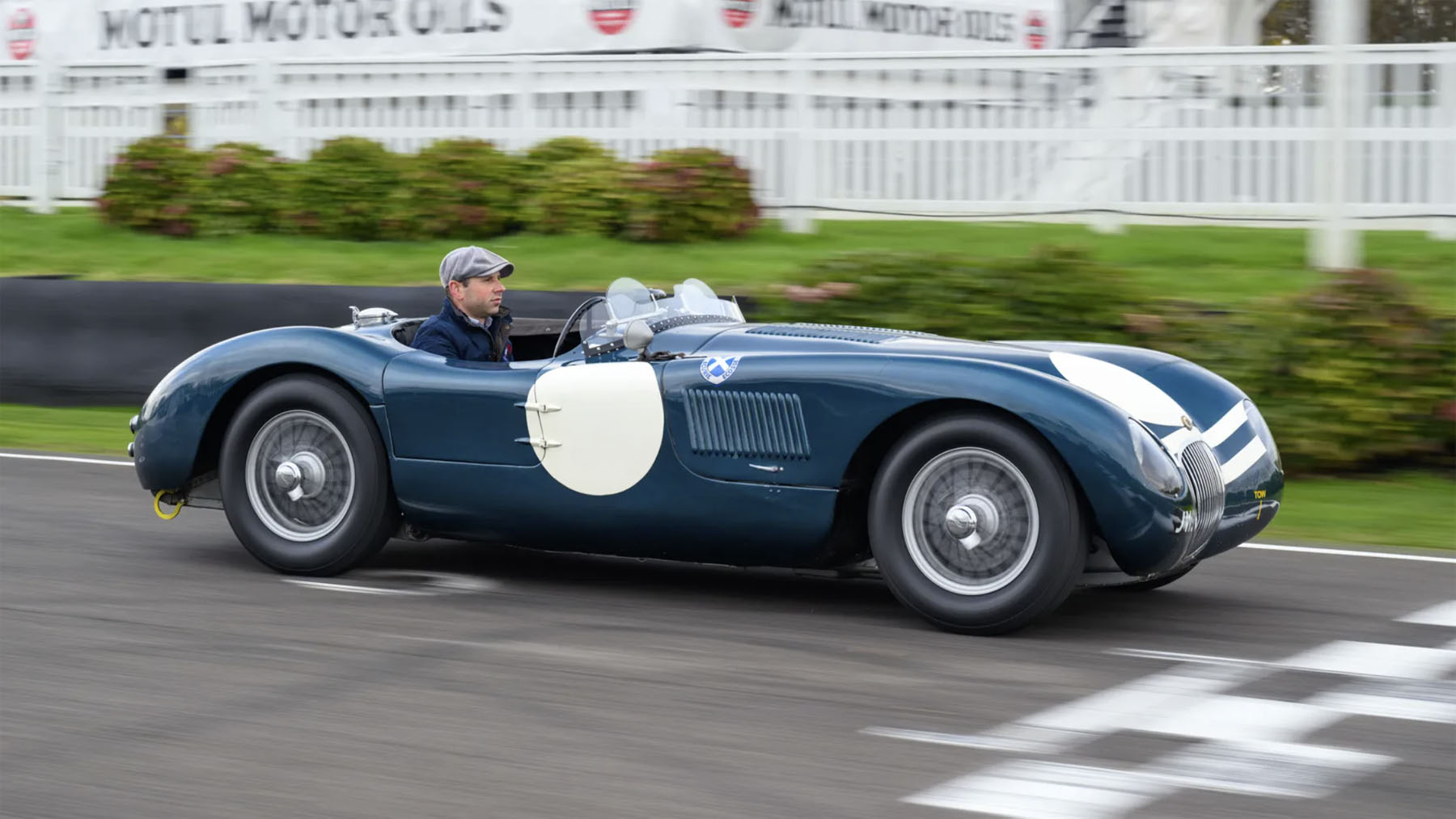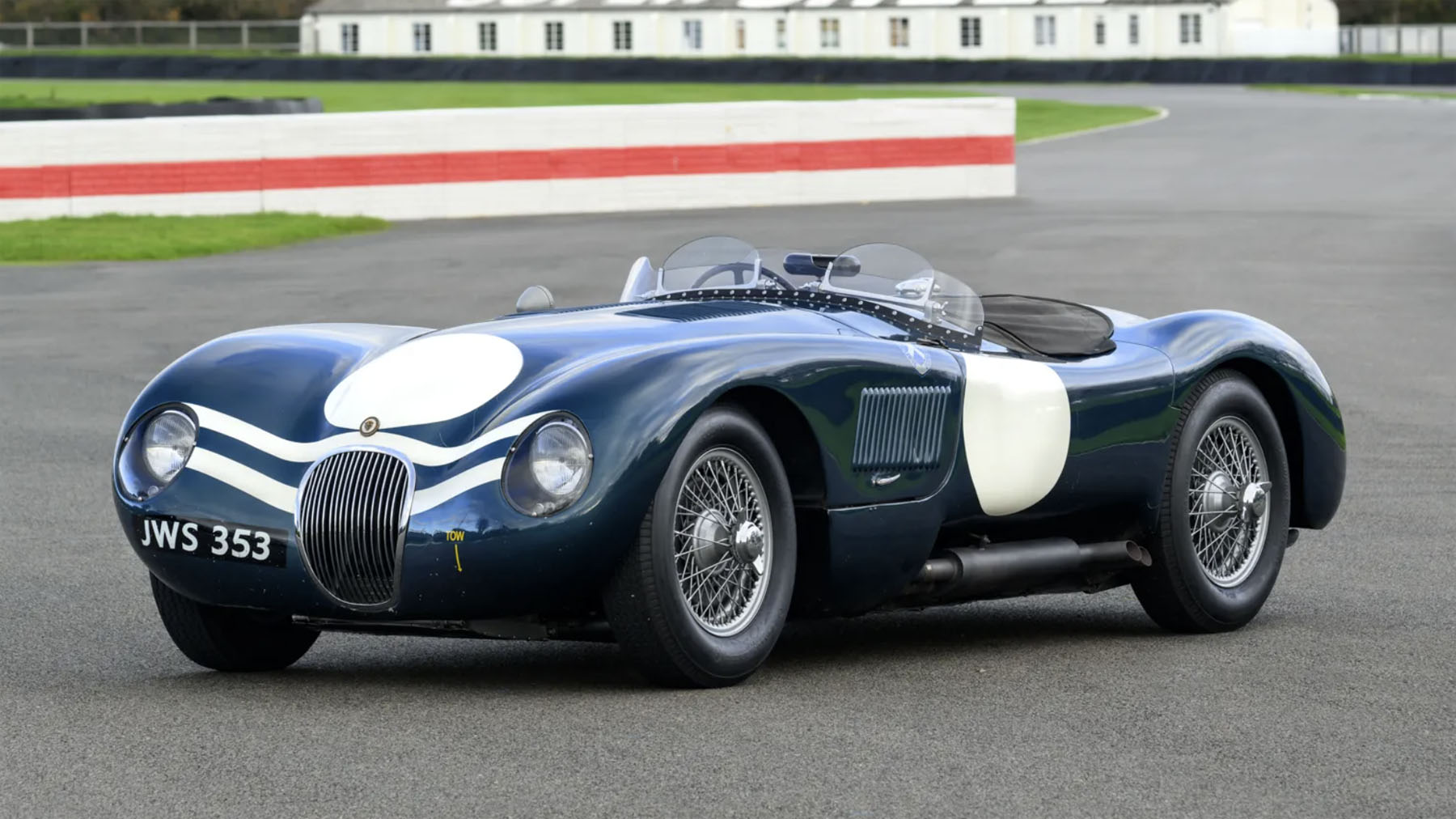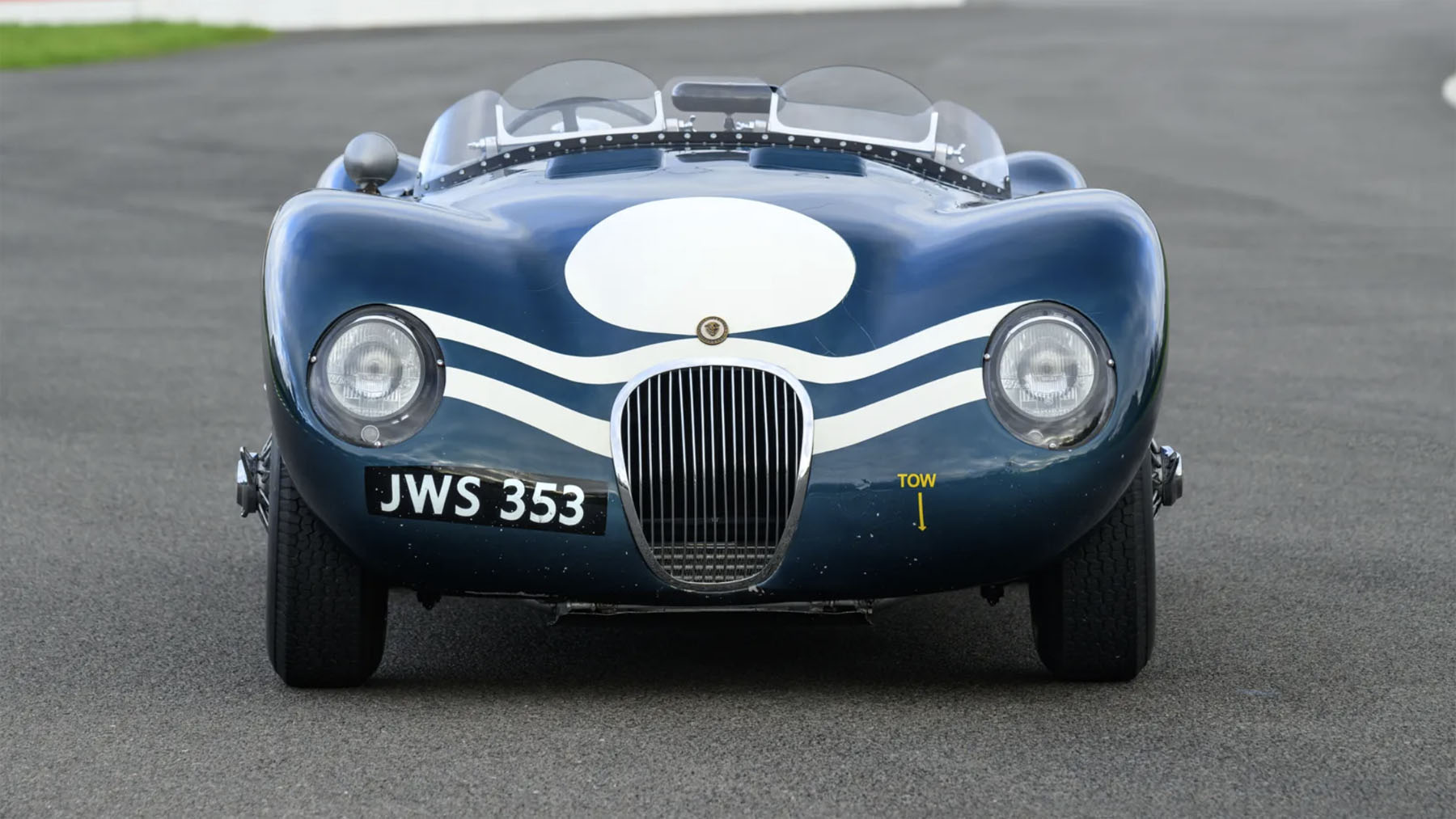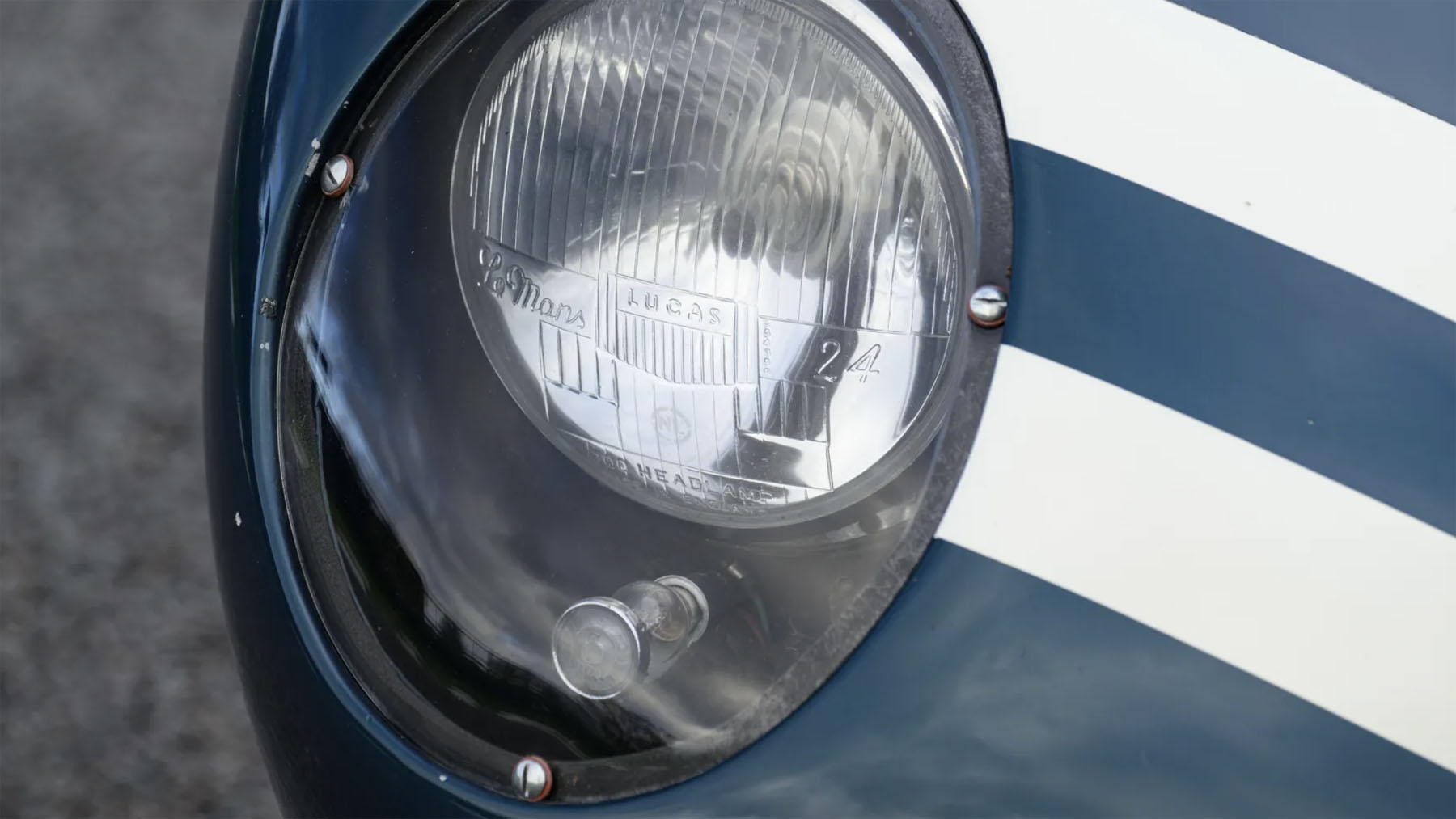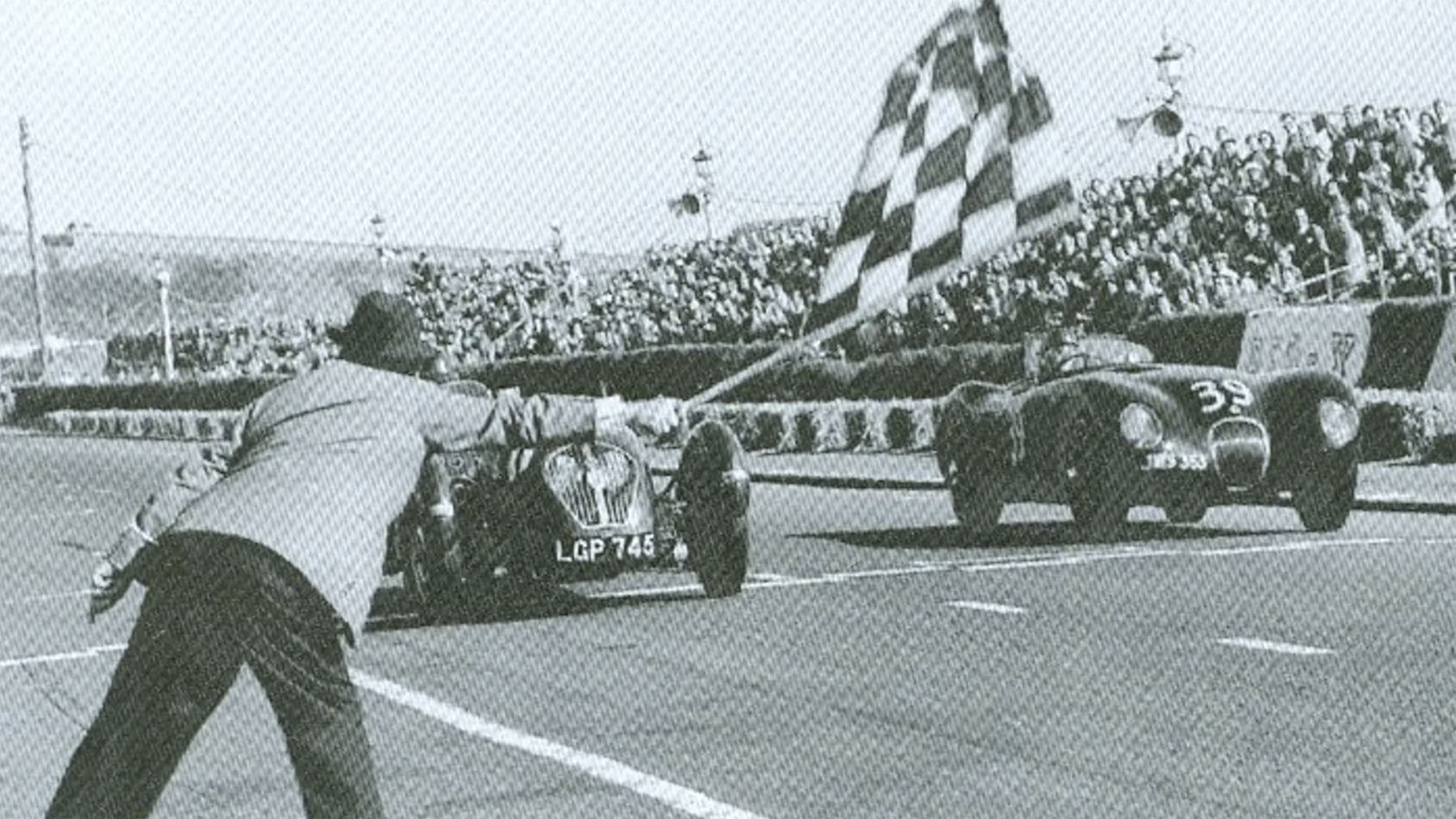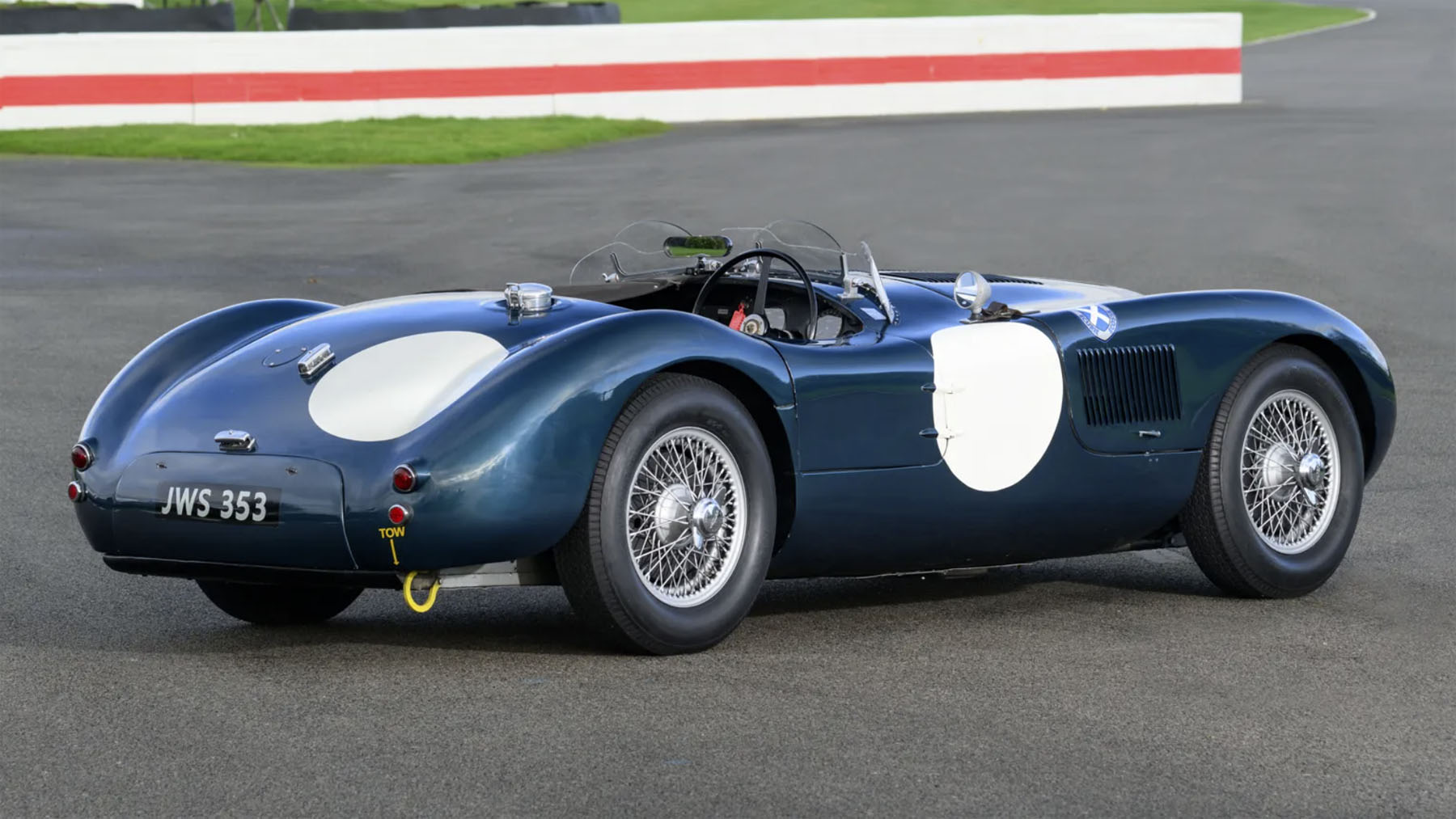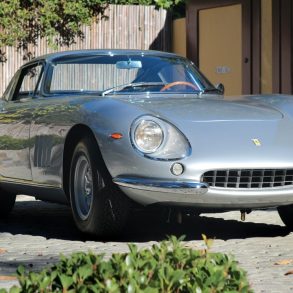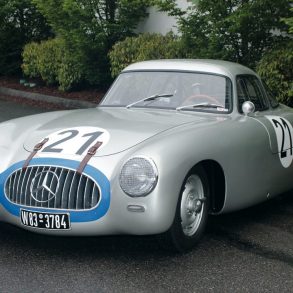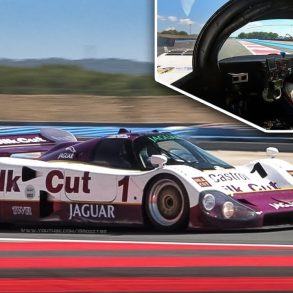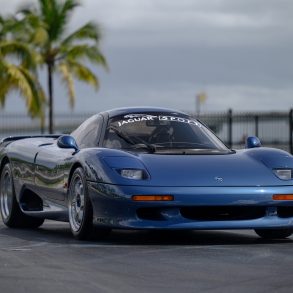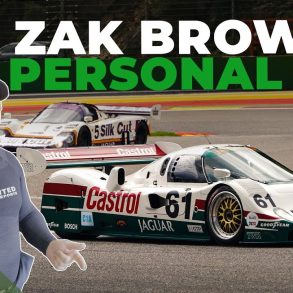Introduction
The Jaguar C-type holds profound significance in automotive history, epitomizing the golden age of sports car racing in the 1950s. Designed by Jaguar’s visionary engineer, William Heynes, the C-type introduced revolutionary aerodynamics and disc brake technology, setting new standards in performance and safety. Its sleek design and lightweight construction contributed to its dominance at prestigious races like Le Mans, where it secured consecutive victories in 1951 and 1953. Beyond its racing triumphs, the C-type’s enduring legacy lies in its influence on future Jaguar models and its status as an icon of British engineering excellence and motorsport heritage.
Chassis XKC 006 Highlights
- The first Jaguar C-Type for Ecurie Ecosse and Ian Stewart
- Victorious debut at the 1952 Jersey International Road Race
- Two successful period race seasons with Ecurie Ecosse
- Regular entrant at Goodwood Revival and more, prepared by CKL Developments
- Retains original engine and accompanying race engine
- First delivered to Ian Stewart, this was the first Jaguar C-Type for Ecurie Ecosse (Scotland’s world-beating privateer racing team) driven from the factory to the first of many victories at the Jersey International Road Race of 1952.
Ian Stuart
A true gentleman of the sport, Ian Stewart was one of the original three Ecurie Ecosse owner-drivers of 1951, with his XK120 being the first to carry the team’s attractive metallic blue. Born in Edinburgh to a family interested in farming and the licensed trade, his relaxed driving style was extremely quick, and he twice raced for the Jaguar works at Le Mans in 1952 and 1953, partnered with Peter Whitehead.
With his XK120 successes gaining the attention of Jaguar’s Lofty England (“a very polished driver and the most promising one on Scottish circuits”), Stewart was offered one of the first three customer C-Types to leave the factory. Not seeing how to pay, the offer was a “terrible dilemma” in Stewart’s account. However, with persuasion from Ecosse patron David Murray the XK was sold and the balance borrowed from Northwest Securities. Stewart was just 22 years old, recalling later that when his father found out he “went through the roof,” marching down to David Murray’s office and forcing him to buy the C-Type. With that fiscal contrivance, XKC 006 was dispatched on 4 July 1952 and registered JWS 353, becoming the first of the famous Jaguar C-Types of Ecurie Ecosse.
Pre-race shakedown
Mere days before its first race, Stewart had collected the new C-Type from the factory, painted racing green, completing the running-in on the Jersey backroads. In Stewart’s words: “I set off from the works with some trepidation. As I was driving off Lofty England said ‘See you win.’ I was filled with foreboding and determination, his words ringing in my ears, but this was soon forgotten in the joy of the drive. A brand-new C-Type smelling of fresh paint without a single rattle was quite something. I will never forget the noise – a combination of the deep exhaust note, and a peculiar ‘zinging’ resonance in the bodywork you don’t hear in other cars. I reached the ferry in a mood of complete euphoria…”
Maiden Voyage
On its racing debut in the Jersey Road Race, Stewart scored a roaring victory, seeing off competition including George Abecassis and Reg Parnell, each aboard a new Aston Martin DB3, and teammates Sir James Scott Douglas and Bill Dobson, close behind in their XK120s. A very successful 1952 followed for Stewart and XKC 006, including 1st places at Charterhall, Crimond, and Turnberry, in the Wakefield Trophy at the Curragh, Charterhall, Goodwood, and Castle Combe, where Stewart defeated Stirling Moss in another C-Type as well as Roy Salvadori in an Aston. Before the Goodwood race, Stewart’s C-Type was repainted in the team’s now-famous Flag Metallic Blue, in its early and deepest shade.
More victories in 1953
For 1953 XKC 006 continued her successes with Ecurie Ecosse and Stewart, also appearing with “Jock” Lawrence from Cullen, and Ninian Sanderson, a motor trader from Glasgow, and with Ron Flockhart, winner of the 1956 Le Mans 24H. Highlights for 1953 included wins at Charterhall, Ibsley, and in three races at Snetterton. She appeared with Sanderson in the Easter Handicap at Goodwood, placing sixth, and again at Charterhall in August. With Ecurie Ecosse acquiring the ex-works C-Types, JWS 353 was advertised for sale in November 1953. Sadly, Ian Stewart’s very promising career was cut short after an injury in Argentina drew an ultimatum from his father – racing or farming. Hanging up his helmet, his exceptional record established a solid claim to be the best Ecurie Ecosse driver until Jackie Stewart. Later in life, while managing the family businesses, he kept fast cars and became a northern agent for Maranello Concessionaires.
XKC 006 was acquired by Hans Davids of the Netherlands, a well-known motorcycle racer who became the Dutch national champion before the war. Davids continued her period competition history for the 1954 season, including a win at Spa (from which a splendid photo survives of the C-Type covered in silverware and garlands), with other appearances at Silverstone, Zandvoort, Oulton Park, and more.
1955 and beyond
By March 1955, this C-Type returned to Britain, with Brian Corser acquiring her for sprinting events and a further British ownership appearing in mostly hill-climbing events. An American sojourn followed from 1960, with David Bevier of New York and then Robert Allen, who apparently used her on weekends and for occasional drives to work.
She returned to Britain in 1973 via Dan Margulies, joining well-known collector Bill Lake, who commissioned a sympathetic but thorough restoration by Lynx around 1975, the first overseen by renowned expert Chris Keith-Lucas. Remembered as favorably original and complete, works included a return from green to Flag Metallic Blue, with the cellulose paint commissioned from original manufacturers Ault & Wyborg of Glasgow. With the precise shade oft-debated, XKC 006 is most likely to be right.
Remaining in family ownership for over three decades and later passing to Bill Lake’s son, she was eventually sold via a major auction house in the mid-2000s, essentially unchanged and unspoiled. Later, with American industrialist and financier Bill Binnie, she was race-prepared and gained a second engine, also offered today.
Fiskens stewardship
Acquired through Fiskens in 2010, XKC 006 joined one of the most prominent and outstanding collections of competition Jaguars and has again been seen competing at Goodwood and other events, seemingly “remembering her way round” the circuit she first raced in the early 50s. Wearing her two identifying “corporal” stripes across the nose and cared for by experts CKL Developments, she remains in outstanding order, presenting with an utterly seductive level of attractive patination.
Presented as part of our Ecurie Ecosse collection and with a fresh report by CKL’s Chris Keith-Lucas, this highly important Ecurie Ecosse C-Type would be a prize for any of the world’s greatest collections. Sure to draw admiring crowds at any of the best events, she is eminently suited for racing at Goodwood and other circuits.
All content © 2024 Fiskens Ltd.


